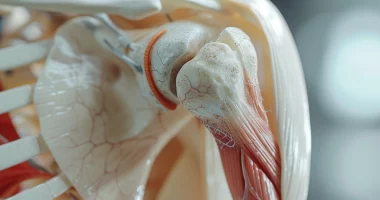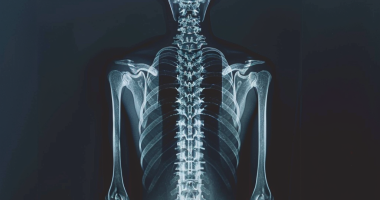Metacarpal fracture
What’s that?
A metacarpal fracture is a disruption of the integrity of the normal bone structures located between the wrist and the phalanges of the fingers. Metacarpal fractures, injuries to the bones of the hand, are among the most common skeletal injuries. These fractures can significantly impact hand function and daily activities. This article will provide an in-depth look at metacarpal fractures, including their types, causes, symptoms, diagnosis, treatment options, and recovery process.
About the disease
Metacarpal fractures account for 2.5-18% of the total skeletal bone fractures and 30-35% of all hand fractures. These injuries most often occur in persons of working age. The metacarpal bones are the five long bones in the hand that connect the wrist to the fingers. A fracture in any of these bones is termed a metacarpal fracture. These fractures can vary in severity and location, affecting one or multiple bones.
The metacarpal bones are often broken by falling on the hand bent in a fist. This injury is manifested by intense pain, swelling, bruising, and impaired hand function. The diagnosis is confirmed by x-ray scanning. Radiography allows visualization of the fracture line and the location of the bone segments.
At the present stage, both conservative (immobilization, closed repositioning with subsequent immobilization and skeletal traction) and operative (intramedullary, osteosynthesis, transosseous, extrafocal osteosynthesis) methods of treatment are used in the treatment of metacarpal fractures.
Types of metacarpal fractures
Traumatologists distinguish the following types of metacarpal fractures:
- Depending on the location of the bone fragments, such fractures can be displaced (the fragments are deflected and angled to each other) and non-displaced.
- Depending on the size of the fracture line, the lesion can be complete (the fracture line extends from one edge of the bone to the other) or incomplete.
- Depending on the skin’s condition over the area of injury, fractures can be open (there is a wound) and closed (the skin is intact).
- Regarding the localization, fractures are subcapital (the line of injury passes in the area of the head of the metacarpal bone) and basal (the traumatic line is located at the base of the metacarpal bone).
- According to the direction of the line of injury, fractures can be oblique or transverse. There are also splinter injuries, in which there is fragmentation of bone tissue into small segments.
Symptoms of a metacarpal fracture
The following set of signs represents symptoms of a metacarpal fracture:
- sharp pain sensations that occur immediately after the injury;
- rapidly increasing swelling;
- hemorrhage in soft tissues (defined as lividity without precise contours and boundaries);
- Bone crunch, which occurs when fragments are displaced;
- impaired hand function – a person cannot bend it into a fist, bring the thumb, hold an object, etc.
Reasons
The metacarpal bones can be injured by a direct force (such as in a fight or from dropping a heavy weight) or by falling on a bent arm.
Common causes include:
- Direct trauma to the hand
- Crushing injuries
- Twisting or bending forces
- Sports injuries
- Falls onto an outstretched hand.
Risk factors might include participation in contact sports, osteoporosis, and certain occupations involving manual labor.
Diagnosis
A patient with a suspected hand fracture undergoes radiography. This examination makes it possible to evaluate the morphological features of the metacarpal bones and the location of the line of injury (its intra-articular or extra-articular location plays a role in determining the treatment method). In complex clinical cases, a layer-by-layer scan of the hand structures may be performed by computed tomography or magnetic resonance imaging.
Radiography is performed not only at the initial stage but also before the plaster cast removal to assess the completeness of consolidation. A fracture is considered to be mended if a dense bone callus has undergone mineralization.
Treatment of metacarpal fracture
The characteristics of the injury determine the treatment of a metacarpal fracture. In some cases, conservative treatment is indicated; in others, surgical treatment is indicated.
Conservative treatment
In conservative treatment, the number of complications exceeds 20%, which limits its use. One of the most common complications is posttraumatic deformities of the metacarpal bones. Posttraumatic deformities are caused by secondary displacement of bone fragments due to unstable fixation.
Conservative treatment is usually used when there is no or minimal displacement of the bone fragments, and manual techniques easily correct it. A plaster cast is applied to ensure bone regeneration. The period of immobilization varies from 4 to 6 weeks.
Surgical treatment
Surgery for metacarpal fracture is performed for non-union fractures and intra-articular localization of the injury. Surgical intervention is aimed at recreating the correct anatomy and subsequent immobilization of the hand.
Surgery is Indicated for displaced fractures, multiple fractures, or if the fracture affects joint alignment. Techniques include internal fixation with plates, screws, or pins. Surgical procedures are always followed by immobilization, physical therapy, and regular follow-ups.
All these surgical options are available in more than 860 hospitals worldwide (https://doctor.global/results/diseases/metacarpal-fracture). For example, percutaneous pinning can be performed in 14 clinics across Israel for an approximate price of $6.9 K (https://doctor.global/results/asia/israel/all-cities/all-specializations/procedures/percutaneous-pinning).
Prevention
Prevention is aimed at preventing household and sports injuries. Prevention methods include:
- Wearing protective gear during sports or high-risk activities.
- Practicing good bone health through diet and exercise.
- Workplace safety in high-risk occupations.
Rehabilitation after a metacarpal fracture
Active rehabilitation after a metacarpal fracture begins after removing the plaster cast and aims to restore hand function. The rehabilitation program usually includes the following areas:
- physical therapy exercises;
- a course of massages;
- taping.
Complications
Possible complications include:
- Nonunion or malunion of the bone.
- Stiffness and decreased range of motion.
- Chronic pain or arthritis.
- Nerve or blood vessel damage in severe cases.
- Prevention
Conclusion
Metacarpal fractures, while common, can have a significant impact on hand function and quality of life. Understanding the nature of these injuries, adhering to prescribed treatment plans, and engaging in appropriate rehabilitation exercises are key to successful recovery. Advances in medical and surgical treatments continue to improve outcomes for patients with metacarpal fractures, enabling them to return to their normal activities with restored function.




